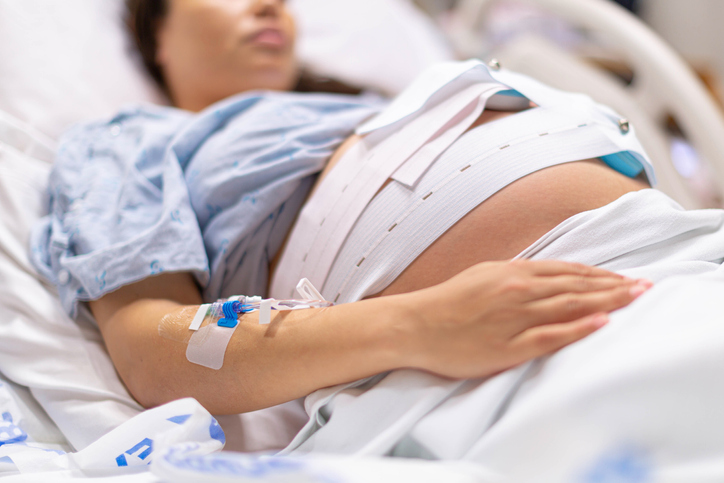Show content
- What is labor induction?
- Definition
- Reasons for induction
- Safety/Risks of Labor Induction
- General introduction to induction safety
- Benefits of labor induction
- Potential risks of induction
- Different types of labor induction
- Cervical ripening
- Medication Induction
- Preparing for labor induction
- Doctor’s appointment
- Eating and drinking
- What to bring to the hospital or birthing center
- Labor induction process
- Before labor
- During labor
- After labor
Induction labor has become increasingly popular in the United States, but many new parents are unsure whether it’s a safe process. Induction labor, usually done with drugs or sometimes a balloon, is the process of accelerating labor and delivery when medically necessary or desired. It’s a potentially very effective way to induce labor, but it does come with certain risks. In this post, we’ll give you a detailed overview of labor induction and discuss the associated risks and benefits. We’ll review what labor induction is, the common methods used to induce labor, and the potential risks that can come with labor induction. We’ll also discuss some of the indications for induction and provide tips for making the process as safe and successful as possible.
What is labor induction?
Definition
Labor induction is a medical procedure used to start the labor process when delivery is overdue or if certain conditions make it necessary for the safety of both mother and baby. Labor induction may be done by stimulating contractions with medication, removing some fluids from the amniotic sac, or other methods of cervical ripening.
Reasons for induction
Labor might need to be induced for various reasons, including is:
- The baby is overdue
- The placenta has stopped functioning properly
- The baby’s health is at risk due to a lack of fluid
- The mother’s health is at risk
- The mother has preeclampsia or gestational diabetes.
Safety/Risks of Labor Induction
General introduction to induction safety
When labor has stopped progressing, or when there are potential risks to the mother or baby, induction may be necessary to avoid further complications. Labor induction is usually considered safe and effective when done under the right conditions and monitored closely during the procedure.
Benefits of labor induction
Benefits of labor induction include avoiding further health risks due to prolonged pregnancy, avoiding premature delivery due to placental issues, and facilitating a healthy delivery once labor begins.
Potential risks of induction
Potential risks of labor induction may include an increased chance of:
- Cesarean section
- Painful contractions
- Infection due to an overstimulated uterus
- Decreased blood flow from the placenta can lead to oxygen deprivation in the baby
- Possible rupture of membranes or death of the baby depending on how advanced and complicated the case is
Different types of labor induction
Cervical ripening
Cervical ripening refers to stimulating and softening the cervix for it to become ready for childbirth by either breaking down mucous plugs with medication or thinning out muscle fibers with a device called a balloon catheter which is inserted into the cervix manually.
Medication Induction
Medication may be used as part of labor induction such as oxytocin (Pitocin) which is a synthetic hormone used to stimulate uterine contractions while monitoring fetal heart rate closely with specialized equipment. Other medications like prostaglandins can also be used in combination with oxytocin to start labor without causing distress or harm to the baby.
Preparing for labor induction
Doctor’s appointment
It’s important that expectant mothers have regular appointments with their doctor throughout their pregnancy to identify any potential issues that may require medical intervention early on so that treatment can be administered as needed. If your doctor indicates that you need induced labor, they will discuss all aspects of your case and what type of treatments they recommend before you proceed with any procedures.
Eating and drinking
Women must stay well-hydrated during their pregnancy as this can help reduce contractions and provide nourishment during delivery via breastmilk production when breastfeeding starts after birth. Alcohol should be avoided during pregnancy and women must eat healthy balanced meals rich in fruits, vegetables, and proteins throughout their pregnancy as well as abstain from smoking while they carry their baby to term.
What to bring to the hospital or birthing center
Women must have everything they need for their big day so ask your doctor what items you should bring with you including extra clothes for both you and your partner, snacks/beverages, medications you need (if applicable), phone charger, etc.
Labor induction process
Before labor
Before inducing active labor your doctor will perform an ultrasound examination to ascertain how far along you are in terms of cervical dilation as well as the fetal position. Upon examination, your doctor might offer hormonal treatments (such as Prostaglandin) to help soften and dilate your cervix before breaking your water if that step is deemed necessary during delivery preparation.
During labor
During active labor, your doctor will continue monitoring fetal heartbeat using specialized equipment while administering necessary medication like Pitocin (synthetic oxytocin) intravenously depending on how well your body responds to treatment. They’ll be spending time helping you manage contractions through various methods including things like massages and breathing exercises. Once your cervix has dilated enough (10 centimeters) then it’s time for delivery!
After labor
After your delivery, you will likely remain under observation until doctors have confirmed that “everything is okay” following birth via routine tests like checking blood pressure and heart rate. You will also receive advice on diet, exercises, and breastfeeding which will help ensure that both you and your newborn are healthy throughout their post-natal life cycle! Overall, Is it safe? Yes! When managed correctly by trained medical personnel with adequate monitoring techniques throughout delivery, medicinally induced labors carry fewer risks than natural deliveries making industrial births a viable option for mothers who face extreme circumstances during pregnancy or are overdue!

